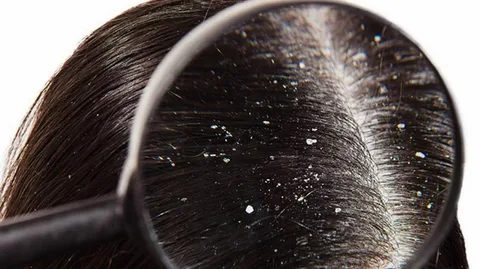Introduction
Dandruff, those pesky white flakes that seem to appear out of nowhere, can be an annoying and embarrassing issue for many people. Not only does it make you self-conscious about your appearance, but it can also be itchy and uncomfortable. The good news is that dandruff is a common problem and, in most cases, is easily treatable. In this comprehensive guide, we’ll explore the causes, signs, and effective treatments for dandruff.
Part 1: Understanding Dandruff
What Causes Dandruff?
Dandruff is the result of multiple factors, and its precise cause may vary from person to person. Some of the most common causes include:
- Malassezia Fungus: The scalp is home to a naturally occurring yeast-like fungus called Malassezia. An excess growth of this fungus can lead to dandruff. It survives on the oils secreted by your hair follicles, causing irritation and flaking.
- Dry Scalp: A dry scalp can be the reason for the shedding of skin cells, which can appear as dandruff. Factors like cold weather, excessive washing, or using harsh shampoos can contribute to a dry scalp.
- Seborrheic Dermatitis: This is a skin condition of the scalp, causing redness, greasiness, and flaking. It’s often associated with dandruff.
- Not Shampooing Enough: Contrary to what you might think, not washing your hair often enough can lead to dandruff. When oil and dead skin cells get collected on the scalp, they can create a breeding ground for the Malassezia fungus.
- Skin Sensitivity or Allergies: Some individuals are more sensitive to certain hair care products or ingredients, leading to skin irritation and dandruff.
Signs of Dandruff
Dandruff is easy to identify due to its distinct characteristics. Look out for the following signs:
- White Flakes: The most obvious sign of dandruff is the presence of white or yellowish flakes on your scalp, hair, and clothing.
- Itching: Dandruff can be itchy, causing discomfort and sometimes even a burning sensation on the scalp.
- Dry Scalp: In addition to flakes, you might notice that your scalp feels dry and tight.
- Redness: Some people with dandruff may also experience redness and inflammation on the scalp.
Part 2: Treating Dandruff

Now that we understand what causes dandruff and how to recognize it let’s explore effective treatments to get rid of this troublesome issue.
- Use an Anti-Dandruff Shampoo
The most common and effective way to treat dandruff is by using an anti-dandruff shampoo. These shampoos contain active ingredients that target the underlying causes of dandruff. Look for shampoos that contain the following:
- Salicylic Acid: Helpsin exfoliation of the scalp, removing excess dead skin cells.
- Zinc Pyrithione: Reduces the growth of Malassezia fungus.
- Ketoconazole: An antifungal agent that can help control Malassezia.
- Coal Tar: Reduces the growth of skin cells on the scalp.
- Selenium Sulfide: Helps reduce the rate at which skin cells die and flake off.
Proper Shampooing Technique
When using an anti-dandruff shampoo, follow these tips for maximum effectiveness:
- Wet your hair thoroughly.
- Apply a small amount of shampoo to your scalp.
- Massage the shampoo into your scalp slowly and gently, using your fingertips, not your nails. This helps in loosening flakes and improving circulation.
- Leave the shampoo on for the recommended time (usually a few minutes) to allow the active ingredients to work.
- Rinse thoroughly, ensuring no shampoo residue remains.
- Use the shampoo regularly, as directed on the product label.
Moisturize Your Scalp
If you have a dry scalp, it’s essential to keep it moisturized. You can do this by:
- Use a moisturizing conditioner after shampooing.
- Apply a natural oil (like coconut oil) to your scalp and leave it on for a few hours before washing it out.
- Drinking enough water to stay hydrated, as hydration also plays a role in scalp health.
Avoid Irritants
Certain hair care products and habits can exacerbate dandruff. To prevent this:
- Avoid excessive use of hair styling products like gels and sprays.
- Be cautious of shampoos and conditioners that contain rough and harmful chemicals, as they can irritate the scalp.
- Reduce the use of heated styling tools like hairdryers and straighteners.
Maintain a Healthy Diet
A balanced diet can contribute to scalp health. Include foods rich in minerals and vitamins, such as zinc, B vitamins, and omega-3 fatty acids. These nutrients promote overall skin health, which can help reduce dandruff.
Seek Medical Advice
If over-the-counter treatments don’t work or if your dandruff is severe and persistent, it’s advisable to consult a dermatologist. They can recommend prescription-strength treatments or investigate whether an underlying medical condition is causing your dandruff.
Be Patient and Consistent
It’s important to note that dandruff may not disappear overnight. Consistency in your chosen treatment is key to achieving long-term relief. Stick to your dandruff treatment regimen, even if you don’t see immediate results.
Conclusion
Dandruff may be a common and bothersome issue, but it’s also highly manageable. Understanding its causes and recognizing its signs are the first steps to effective treatment. By using the right and suitable products, maintaining a healthy scalp, and seeking medical advice when necessary, you can bid farewell to dandruff and enjoy a healthier, flake-free scalp and hair.
Remember, everyone’s scalp is unique, so you may need to experiment with different treatments to find the one that works best for you. Don’t let dandruff hold you back; take action and regain your confidence and comfort.
With patience and consistent care, you can get rid of dandruff and enjoy a healthier, flake-free scalp and hair. So, say goodbye to those pesky white flakes and hello to confidence and comfort.